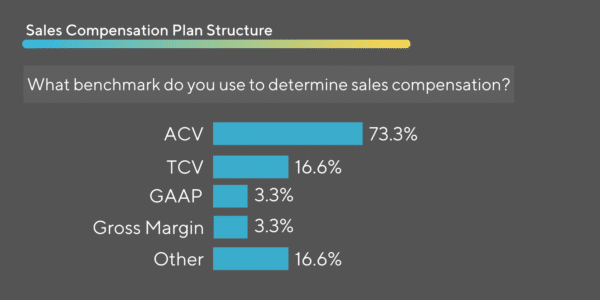Trending
Advancing Your Influence: Strategies for CFOs
/in Featured on Home, Trending, Talent, Developing Your Team, Leadership & Vision, CFO Leadership/by Matt McCueHow People Leaders Can Invest In Their Own Growth
/in Developing Your Team, Leadership & Vision, I Need to Retain my Top Performers, Featured on Home, Trending, Talent/by Matt McCue5 Levers of Leadership: How CHROs Can Foster a Resilient and Efficient Workforce
/in Featured on Home, Trending, Talent, I Need to Retain my Top Performers, Developing Your Team, Leadership & Vision, I'm Looking for Strategic Planning Tips/by Matt McCueShare this entry

Compensation for Your Sales Team: Getting it Right
For startups, sales compensation can be one of the hardest things to get right. Especially in the dynamic early days of your business, sales compensation can change more than any other part of the company infrastructure and is full of unintended consequences, requiring constant recalibration. As it’s always a hot topic amongst finance leaders, last week The Circle convened to discuss the complexities of sales compensation. Joining us was Paul Vinogradov, Principal at Deloitte’s Sales Transformation practice, to share his insights and experiences gained from 20 years advising clients on compensation and to answer questions from our community. Here are the takeaways from our conversation:
Sales Compensation Best Practices
Opening the conversation with some general remarks about sales compensation, Paul acknowledged the unique ability of this particular topic to inspire conflicting opinions across different roles within an organization. Indeed, it is likely that the CEO, Head of Sales, Head of Finance, Marketing team, Operations team, and HR have particular ideas or worries concerning compensation, each informed by the individuals’ personal experiences with different businesses or groups.
The long shadow that sales compensation can cast across a company underscores the importance of getting these different players on the same page throughout the planning process. Since sales compensation is such an all-encompassing issue throughout an organization, it’s imperative to have perspectives and buy-in from all the players involved when designing a sales compensation plan, especially in a startup.
In Paul’s experience, sales compensation can often act as the “canary in the coalmine” for a company, revealing a previously unseen issue and prompting the team to remedy that issue. When a problem appears to arise in the sales compensation program, it is likely a symptom of a larger and deeper issue; for example, not having the correct roles in your sales organization, not having the right go-to-market model, or not setting quotas correctly for the sales team are all problems that may manifest as an issue in the sales compensation plan data. Once you’ve determined that your organization has a deeper issue at play, don’t hesitate to get to the bottom of it. These issues with the compensation plan are indicative of issues within the philosophy and structure of the sales model, and addressing them requires swift action.
Finally, speaking with an audience of mostly CFOs and other Finance leaders, Paul was sure to emphasize how critical a CFO’s input can be during successful sales compensation planning. Noting that a strong relationship between the CFO and CRO (or Head of Sales) is paramount for success, Paul described how these two entities need to align and have a healthy dialogue about the plan in order for it to attract and retain key talent.
“Oftentimes when an issue appears within the sales compensation program, it’s actually the canary in the coal mine. It’s not just a sales compensation problem, but it’s setting off a signal that’s indicative of another issue.”
Successful Sales Onboarding
The Account Executive (AE) onboarding process can be immensely complex, both for the new hire and for the supervisor in charge of tracking how they ramp. Obviously, every company wants their new hires to ramp to full productivity as quickly as possible in order to maximize efficiency. However, depending on your product or your business, it can take some time for AEs to become fully acclimated into their new position. In the ensuing discussion around this topic, multiple members described the key metrics and indicators that they watched to track a new AE’s progress.
One of the best metrics to watch in order to determine whether new AE will ramp successfully is their new logo pipeline generation. According to one of our members, if the AE builds pipeline quickly and converts on that pipeline at a rate greater than half of the expected conversion rate for new logos, that AE is tracking towards a better performance. Finally, while the timeline on which new AEs are expected to ramp will vary from company to company, a few of our members agreed that successful performers do not hit their productive peak until their second or third year with a company.
Structuring Your Sales Organization
Choosing when, why, and how to structure your sales organization into different areas of focus inevitably leads to changes or tweaks in the compensation plan. For example, building out a separate renewals team as opposed to asking customer service reps to handle renewals has immense implications for compensation. Ultimately, choosing when and why to build out that team comes down to a question of the volume of renewals versus the workload associated with them.
Finally, the call ended with a discussion of the merits of the “Hunter/Farmer” model, and whether or not it makes sense to split sales between new and upsell business. Paul discussed how the Hunter/Farmer model works best in situations where most of the selling takes place in the first 1-2 sales; after the “hunter” lands the sale, he or she can then hand off the account to the “farmer” to manage, retain, and expand the relationship. For sales with a “land and expand” approach, Paul recommended the “Rancher” model, where the first sale is just the beginning and the “rancher” salesperson will stay with the account to keep the customer involved.

Adjusting Compensation
In a conversation that got at the dynamic nature of compensation plans, especially in earlier-stage companies, the group discussed when in the year is the best opportunity to change the compensation plan and how many times a company could effectively change its plan within a year.
In general, a company should resist making changes to their compensation plans mid-year, as it’s better to let the plan run for a full year before making any changes for the following year. That is not to say that a company should under no circumstances change their compensation plan mid-year; indeed, a larger strategic or structural change to the business or the business environment — such as a merger or an acquisition — could be grounds for a mid-year change. Further, the length of a company’s sales cycle can also determine whether or not it could effectively make a change mid-year, with shorter sales cycles allowing for more flexibility, as the changes will take effect more quickly.
The group agreed that a compensation plan for a younger company was more likely to require changes multiple times in a year than an older one. As younger companies are constantly growing and altering their strategy, the compensation plan must adjust accordingly. Finally, in order to avoid frustration among employees, the group emphasized the importance of communicating these changes (and their consequences) effectively to the employee base as they occur, as well as making it clear that these changes are to be expected.
Best Practices for Quota Setting
Quota setting is yet another aspect of sales compensation that has the potential to cause issues if not handled with focus. Indeed, alluding to the dire consequences that may occur if not handled correctly, one of our members remarked during our discussion that it’s important to “steer the boat, don’t tip the boat.” Amidst stories of sales teams walking out after mishandled quota adjustments, our members shared a few key best practices to consider when tackling quotas.
First, in general, an increase in quotas should occur gradually over a few years, rather than a major shock all at once; after determining a goal quota for a few years down the road, companies should incrementally increase quotas in the compensation plan until they reach the new levels. Further, when working to determine the new quota to add into the compensation plan, one Circle member recommended that the Finance team and the Sales Operations team each put together a model before meeting to reconcile the two plans. Working to bring the two plans together helps each group understand the other’s perspective, and enables more buy-in from employees on the new changes.
Finally, Paul shared some of his thoughts on quota setting, discussing how a company has to juggle both the quota itself and the business opportunity associated with that quota when making changes to their compensation plan. Further, the methodology used to determine the quota should change depending on the nature of the role. You would certainly set your quota differently if you had a small number of big strategic accounts versus a large number of smaller accounts.
Related Blog Posts

Evolving Your Compensation Plan on the Road to IPO

Navigating Liquidity During Market Uncertainty




